1970s
Follies of the Madmen #403
"We really move our tail for you." Not acceptable today as a slogan?
However, the "Coach Pub" is always in style.
Posted By: Paul - Mon Dec 31, 2018 -
Comments (3)
Category: Innuendo, Double Entendres, Symbolism, Nudge-Nudge-Wink-Wink and Subliminal Messages, Advertising, Air Travel and Airlines, 1970s
Three men with a pole on their head
February 1976: a performance art group calling itself Ddart walked around the Norfolk countryside for a week carrying on their heads a ten foot pole supported by hats resembling ice cream cones. They called this performance 'Circular Walk.' The UK Arts Council paid them £395 for this.The trio never really explained what the intended meaning of this was, except for the following brief statement later provided by Ray Richards, a member of the group:
More controversial was why the Arts Council had paid for it. John Walker, author of Art & Outrage, provides some details:
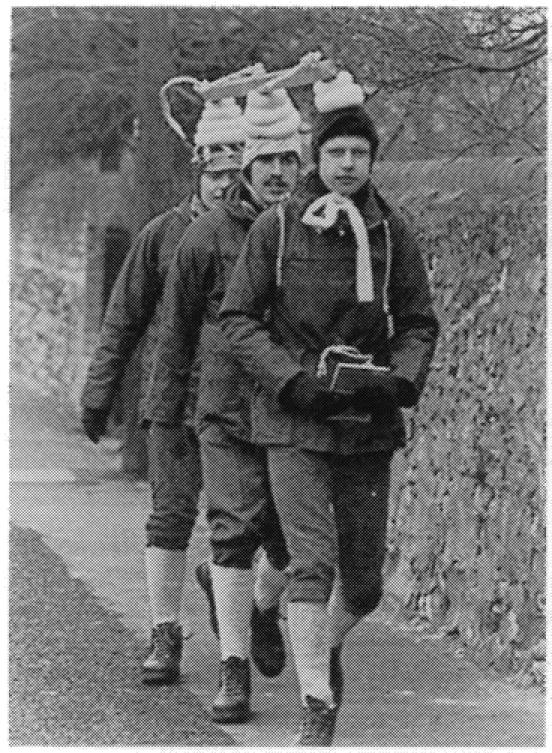
Image source: Art & Outrage
Posted By: Alex - Sat Dec 29, 2018 -
Comments (1)
Category: Art, 1970s
Starcrash
Worst film ever? This blogger makes his case.
Posted By: Paul - Sat Dec 29, 2018 -
Comments (3)
Category: Ineptness, Crudity, Talentlessness, Kitsch, and Bad Art, Movies, Science Fiction, 1970s
Mary Connors - The Human Cannonball
Mary Connors is best known for what she failed to achieve. She repeatedly tried to cross the River Avon by being fired across it in a cannon, and she kept ending up in the river.She first tried in 1974, and failed three times in a row. When she then tried to cross the river using a rope and pulley, the pulley jammed, sending her once again into the water.
She tried again in 1976. Once again, she ended up swimming. I think, overall, she made five failed attempts, and never succeeded.
Another highlight of her career was that in 1975 she performed the human cannonball act topless, and she did get that right.
You can watch a video of her first failed attempt at crossing the Avon over at the MACE archive (media archive for central England), but the clip isn't embeddable, so you'll need to actually go to the site to view it.
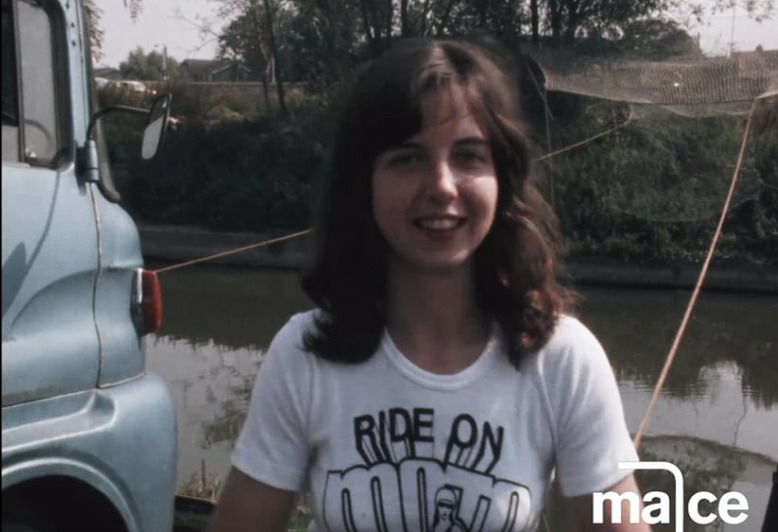
Mary Connors - 1974
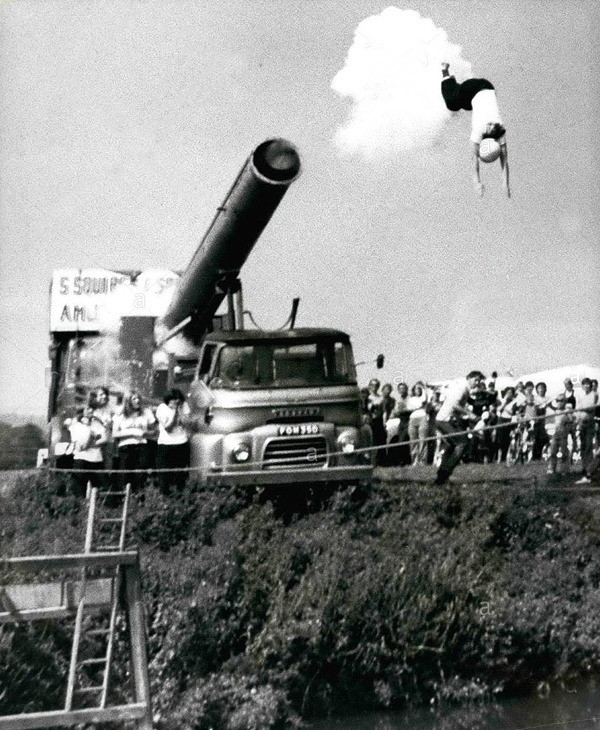
The 1974 attempt
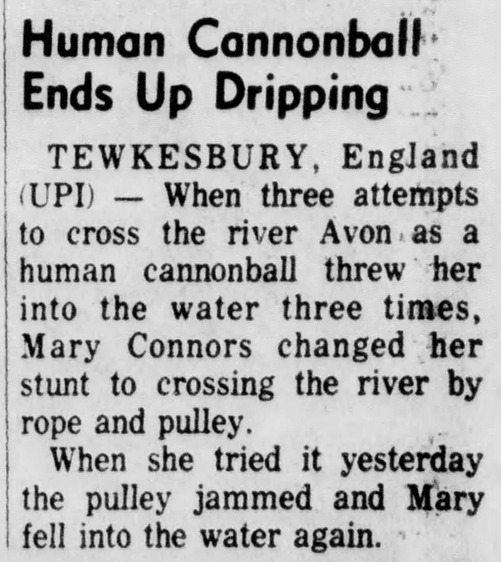
San Rafael Daily Independent Journal - Aug 28, 1974
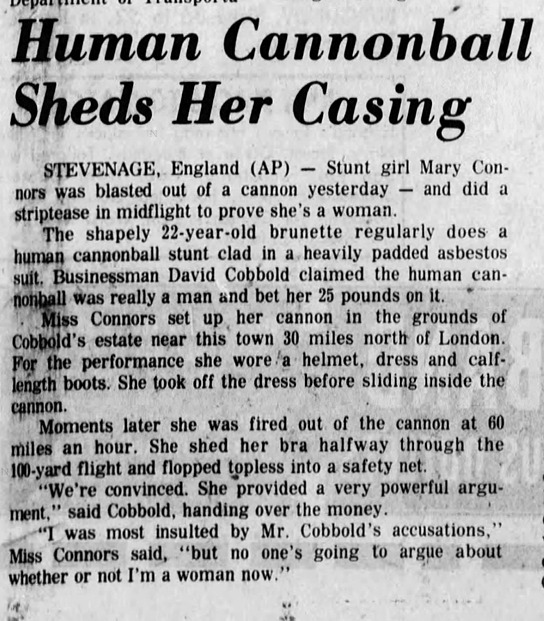
Asbury Park Press - June 6, 1975
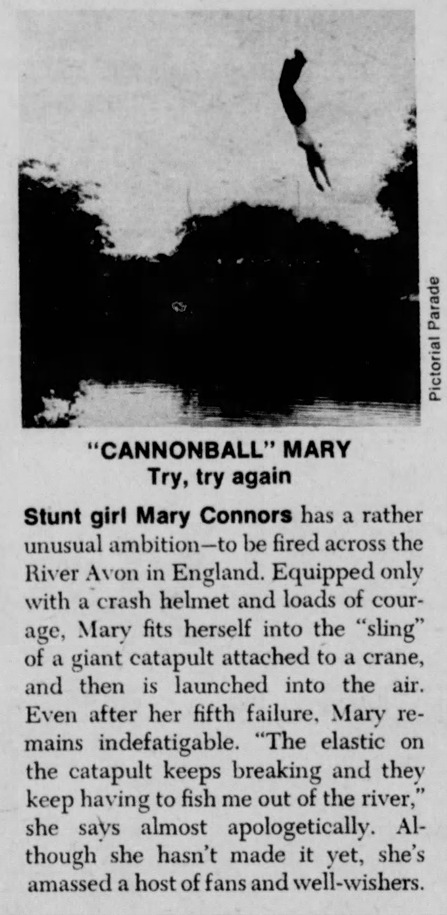
The Bryan Eagle - Jan 25, 1976
Posted By: Alex - Fri Dec 28, 2018 -
Comments (3)
Category: Daredevils, Stuntpeople and Thrillseekers, 1970s
What does Mrs. Claus do when she gets lonely?
Don't the elves keep her company?
Esquire - Jan 1971
Posted By: Alex - Wed Dec 26, 2018 -
Comments (0)
Category: Advertising, 1970s, Christmas
The Mountain of the Cannibal God
Wikipedia page.
Posted By: Paul - Fri Dec 21, 2018 -
Comments (1)
Category: Ineptness, Crudity, Talentlessness, Kitsch, and Bad Art, Movies, Stereotypes and Cliches, Foreign Customs, 1970s
Bodies as fertilizer
Sounds logical to me. Though I notice that Dr. Henderson Smith came out with his idea in late 1973, a few months after Soylent Green had been in theaters. Was that the source of his idea?
Honolulu Advertiser - Aug 10, 1973
Posted By: Alex - Thu Dec 20, 2018 -
Comments (5)
Category: Death, 1970s
Commercials from 1979
The concerns of forty years ago seem idyllic by comparison to the present.
Posted By: Paul - Sat Dec 15, 2018 -
Comments (1)
Category: Advertising, 1970s, Nostalgia
Velvet Smooth
If you like the clips, the full film follows.
Posted By: Paul - Sun Dec 09, 2018 -
Comments (2)
Category: Crime, Detectives, Private Eyes and Other Investigators, Excess, Overkill, Hyperbole and Too Much Is Not Enough, Ineptness, Crudity, Talentlessness, Kitsch, and Bad Art, Movies, Exploitation and Grindhouse, 1970s
Bass Guitar Suit
Created in 1974 by musician Dan Hartman and clothes designer Bill Witten, it supposedly transformed the human body, specifically the abdomen, into a bass guitar.
Source: F***Yeah Bass Guitars


Abilene Reporter-News - Oct 13, 1974
Posted By: Alex - Sun Nov 25, 2018 -
Comments (3)
Category: Fashion, Music, 1970s

| Who We Are |
|---|
| Alex Boese Alex is the creator and curator of the Museum of Hoaxes. He's also the author of various weird, non-fiction, science-themed books such as Elephants on Acid and Psychedelic Apes. Paul Di Filippo Paul has been paid to put weird ideas into fictional form for over thirty years, in his career as a noted science fiction writer. He has recently begun blogging on many curious topics with three fellow writers at The Inferior 4+1. Contact Us |




